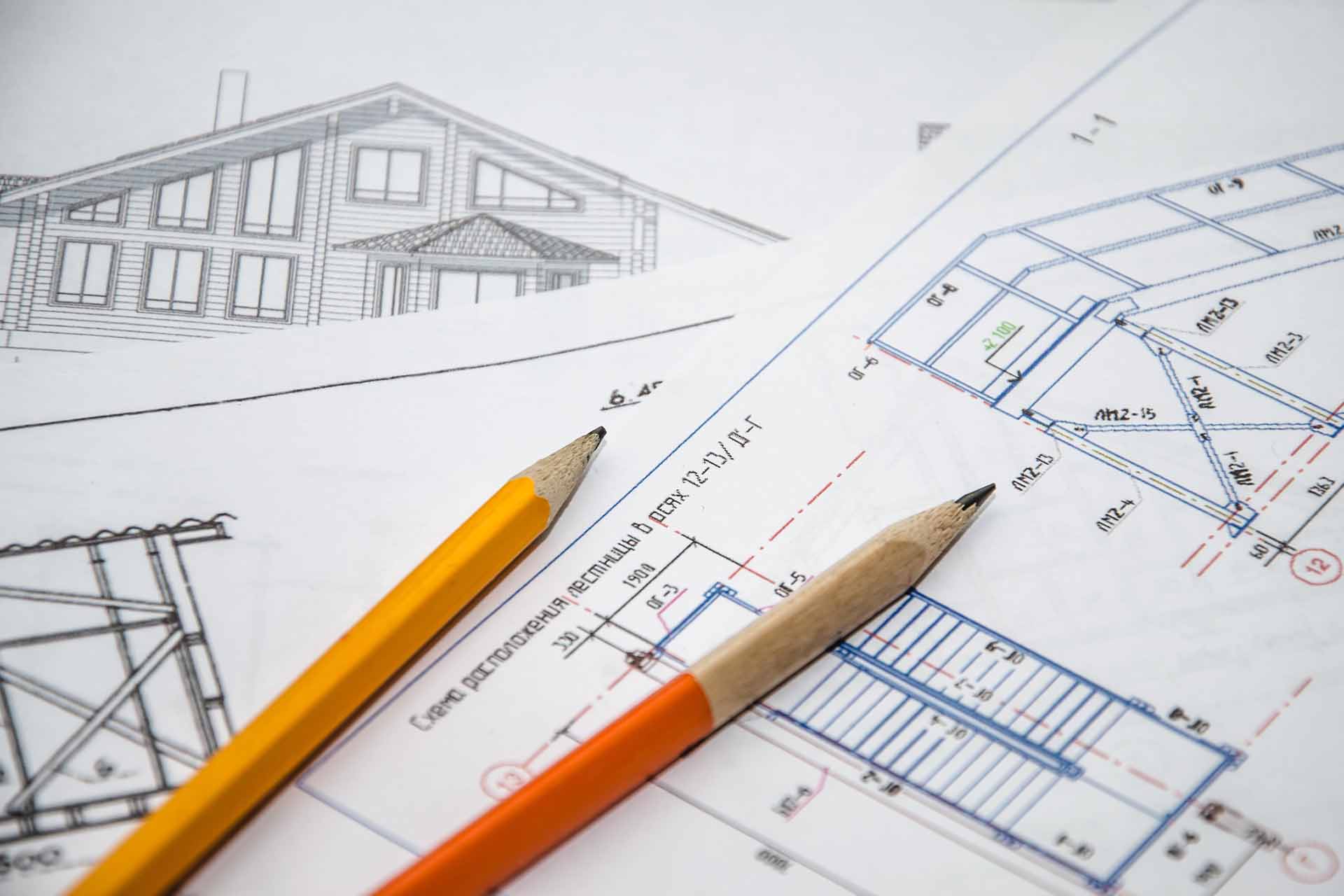Architect Interview Questions You Should Be Ready to Answer
Architect Interview Questions You Should Be Ready to Answer
Blog Article
Comprehending the Diverse Career Paths Available for Aspiring Architect
As an ambitious Architect, you have a globe of profession courses waiting on you. Each path supplies special obstacles and opportunities to apply your imagination and technical know-how. Whether you're drawn to standard design or the subtleties of sustainable design, there's a particular niche that aligns with your rate of interests. Understanding these diverse alternatives can form your specialist trip, but which instructions will you select to explore initially?
Standard Style: Creating Frameworks and structures
Standard style concentrates on designing buildings and structures that blend capability with visual appeal. Your styles can reflect cultural heritage, showcasing neighborhood traditions while meeting contemporary demands.
You'll create skills in composing, model-making, and website analysis, permitting you to imagine and interact your concepts properly. Involving with clients, you'll require to recognize their vision and convert it into practical designs.
Moreover, building codes and sustainability practices are crucial in your work, guaranteeing your frameworks are safe and environmentally friendly. As you expand in your profession, you'll find possibilities in residential, commercial, or perhaps repair jobs, each offering unique challenges. Embracing traditional architecture leads the way for a satisfying profession that pays homage to the past while forming the future.
Urban Planning: Shaping Neighborhoods and Public Spaces
As a hopeful Architect, you can play a vital function as a city planner, transforming just how communities engage and work. By using area involvement techniques, you'll guarantee that homeowners have a voice in forming their environment. And also, incorporating lasting style concepts will aid produce areas that not only fulfill today's needs however additionally secure the future.
Duty of Urban Planners
While several could consider designers as the sole dreamers behind structures, urban coordinators play a necessary function in forming the wider landscape of communities and public areas. They evaluate land usage, zoning regulations, and area needs to create lasting environments that enhance quality of life. By collaborating with various stakeholders, you'll aid make parks, transportation systems, and houses that promote social communication and availability. Urban coordinators additionally focus on environmental considerations, making sure that developments integrate green spaces and support biodiversity. Your know-how in spatial style and community characteristics allows you to visualize future development while maintaining social heritage. In this vital duty, you'll straight influence exactly how individuals experience their surroundings, making every task a chance for positive modification.
Community Involvement Approaches
Reliable community involvement techniques are vital for city planners to assure that the voices of residents are heard and valued in the planning process. To cultivate meaningful dialogue, you must focus on open online forums and workshops where neighborhood members can share their ideas and problems. By actively listening and including comments, you'll create spaces that mirror the area's requirements, eventually leading to more lasting and effective metropolitan atmospheres.
Sustainable Style Concepts
When making urban spaces, integrating lasting layout concepts is crucial for creating settings that flourish both environmentally and socially. Take into consideration integrating eco-friendly spaces, like yards and parks, to improve biodiversity and enhance air quality.
Creating with water preservation in mind is also essential-- assume concerning rainfall gardens and permeable surface areas to take care of stormwater. Involving neighborhood participants throughout the preparation procedure warranties that the spaces you produce fulfill their requirements and urge social communication. By embracing these concepts, you'll add to vibrant, lasting urban landscapes that profit every person.

Landscape Style: Creating Lasting Outdoor Settings
As you check out landscape style, you'll discover important design principles that create practical and beautiful outside rooms. Sustainable practices play an important function in making certain these settings thrive while lessening environmental influence. And also, you'll locate a range of occupation possibilities that allow you to make an actual distinction in exactly how individuals communicate with nature.
Design Concepts in Landscape
Comprehending design concepts in landscape architecture is crucial for developing lasting outside settings that balance with nature. You'll need to consider elements like range, equilibrium, and proportion to assure your designs really feel cohesive and inviting. Including native plants not only improves biodiversity yet also reduces water use, making your landscape durable. Think regarding the circulation of area and how individuals engage with it; pathways and seating locations need to invite expedition and leisure. Additionally, focus on seasonal adjustments, designing with products that match the surroundings year-round (Architect). By prioritizing sustainability and looks, you can develop exterior spaces that improve the community and promote wellness. Embracing these principles will certainly set a strong structure for your career in landscape architecture.
Sustainable Practices Overview
Sustainable methods in landscape architecture not only concentrate on appearances yet additionally focus on environmental health and source preservation. By integrating indigenous plants, you enhance biodiversity and lower the need for chemical plant foods and chemicals. Applying reliable irrigation systems assists preserve water and decreases runoff, safeguarding close-by ecological communities. You can make areas that promote soil health and wellness, such as using organic materials and exercising permaculture principles. In addition, integrating environment-friendly infrastructure, like rainfall gardens and permeable pavements, help in stormwater administration and reduces metropolitan warmth. When you produce outdoor environments with sustainability in mind, you contribute to a much healthier earth and offer spaces that promote area connection. Ultimately, these methods guarantee your layouts benefit both individuals and the setting for many years to find.
Career Opportunities Exploration
With a strong foundation in lasting techniques, landscape design uses a selection of career paths that enable you to make a purposeful influence on the atmosphere. Urban coordinators often team up with landscape architects to create environment-friendly spaces in urban setups, improving city livability. If you're passionate regarding education, think about ending up being a landscape architecture educator, motivating future generations.
Lasting Layout: Concentrating On Eco-Friendly Practices
As you discover your occupation in design, welcoming eco-friendly practices can set you apart in a competitive field. Sustainable design focuses on creating buildings that reduce ecological effect while boosting passenger health. By incorporating eco-friendly materials, energy-efficient systems, and lasting building methods, you'll contribute to a greener future.
Beginning by acquiring understanding of environment-friendly accreditations like LEED or BREEAM, which can strengthen your credentials. Take into consideration exactly how all-natural light, air flow, and thermal efficiency can enhance style. Team up with engineers and environmental experts to innovate options that reduce waste and preserve resources.
Don't neglect the significance of community participation-- engaging local stakeholders can motivate styles that harmonize with the atmosphere. As clients progressively prioritize sustainability, your know-how in green techniques will certainly not just draw in projects yet likewise meet your interest for accountable style. Accept this vital aspect of the career, and see your profession prosper.
Historical Preservation: Shielding and Recovering Social Heritage
While you begin on your building journey, take into consideration the important duty of historical conservation in maintaining our social heritage. This field concentrates on the defense and repair of significant structures, websites, and structures that tell the stories of our past. By engaging in historical preservation, you'll aid safeguard the architectural tradition that shapes area identity.
As a historical conservation Architect, you'll evaluate historical importance and assess the problem of structures. You'll work closely with chroniclers and conservationists to ensure genuine remediation methods are utilized. This occupation course permits you to mix creative thinking with research study, allowing you to design solutions that appreciate initial products and craftsmanship.
Your work not just adds to sustainability by reusing existing structures but additionally promotes a sense of satisfaction within areas. Welcoming this course will certainly help you come to be a guardian of history, maintaining the tales and visual appeals that improve our lives.
Inside Design: Enhancing Indoor Spaces
Historic conservation and interior style both share a dedication to improving the built environment, however they focus on various elements. While historic conservation highlights maintaining a structure's historical and social worth, indoor style absolutely nos in on optimizing indoor rooms for capability and appearances.
As an Architect aspiring Architect, you'll discover that interior design allows you to blend creativity with technical abilities. You'll create spaces that not just look excellent yet also advertise comfort and click here performance. This field involves recognizing how light, shade, and materials connect within an area, affecting state of mind and usability.
You'll work with various projects, from residential homes to industrial workplaces, ensuring that each atmosphere meets the demands of its passengers. By prioritizing individual experience, you can transform insides into useful and inspiring spaces, making a considerable influence on how individuals connect with their surroundings. Accept the possibility to improve indoor settings and shape the method people live and work.
Industrial Design: Merging Performance With Visual Appeals
Industrial design plays an essential function in producing items that perfectly blend visual appeals with capability, making sure that what you make use of everyday is not just aesthetically appealing but also practical. As an aspiring Architect, you can involve yourself in this area, focusing on creating every little thing from furnishings to customer electronics. Your job entails understanding individual needs, products, and manufacturing procedures, allowing you to create cutting-edge remedies that enhance everyday experiences.
In commercial style, you'll usually collaborate with marketing professionals, producers, and designers, ensuring that your designs are not just gorgeous yet additionally feasible. This occupation course supplies a dynamic environment where creativity satisfies practicality, making it a gratifying option for architects interested in shaping the products of tomorrow.
Often Asked Inquiries
What Educational Certifications Do I Required to End Up Being an Engineer?
To come to be an engineer, you'll need an expert degree in style, generally a Bachelor's or Master's. In addition, you'll have to finish an internship and pass the Architect Registration Examination to practice legally.
Are There Accreditation Requirements for Various Architectural Profession Paths?
Yes, there're certification demands for various architectural courses. Architect. You'll need to pass exams, total teaching fellowships, and in some cases pursue specialized training, depending on your chosen emphasis, like landscape architecture, urban design, or historic conservation
What Software Application Skills Are Crucial for Designers Today?

Exactly How Can I Gain Practical Experience While Researching Architecture?
You can obtain sensible experience by interning at architectural companies, joining style competitions, offering for area projects, or working together with schoolmates on real-world projects. These possibilities boost your abilities and build useful connections in the market.
What Job Opportunities Exist Outdoors Conventional Style Firms?
You can explore numerous work opportunities outside standard design firms, like urban preparation, interior decoration, landscape architecture, construction administration, property development, more info and even duties in sustainability consulting. Each offers one-of-a-kind obstacles and rewards.
Whether you're attracted to typical design or the nuances of lasting style, there's a particular niche that straightens with your rate of interests.When creating city rooms, incorporating lasting design concepts is important for creating settings that thrive both ecologically and socially.As you discover landscape architecture, you'll uncover vital layout concepts that develop useful and beautiful outside spaces.Understanding design concepts in landscape style is necessary for developing lasting exterior atmospheres that integrate with nature.In industrial style, you'll commonly collaborate with suppliers, engineers, and marketing experts, making sure that your styles are not only stunning yet additionally viable.
Report this page